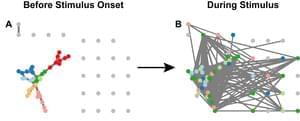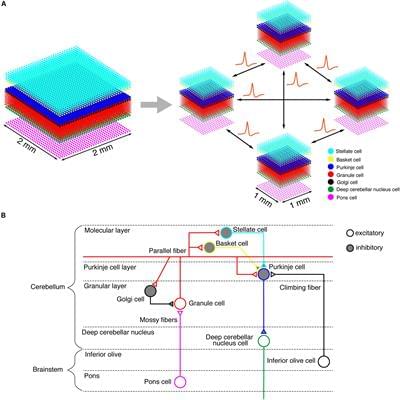In the early days of industrialization, most manufacturers were vertically integrated, including automakers. That changed over time, but the shift is reversing.
Get the latest international news and world events from around the world.
NASA’s most iconic space launches and landings take years of preparation, but they all come down to a few tense final moments in the control room
Here’s a supercut of our favorite celebrations as NASA’s teams cheer on mission success.a
Tesla Said It Was Possible, Now Wireless Electricity Is Finally Becoming Reality
Nikola Tesla’s vision of the world is about to become reality.
#engineering
Wireless electricity is a 100-year-old dream that just might turn into reality in the coming years. The advent of wireless charging, electric vehicles, 5G, and the need for greater sustainability have led to a push for the development of fully operational wireless transmission technology in different parts of the world.
From America’s Wave Inc. to Japan-based Space Power Technologies and New Zealand’s energy startup Emrod, there are a number of companies that are currently working on wireless power transmission technology. Field tests have also begun for some systems, and it will be interesting to see who comes first in this race to offer an efficient, economical, and viable wireless electricity solution.
Before we get into the different revolutionary initiatives concerning wireless electricity, it is important to understand its origin and the underlying concept behind this technology that makes it a reliable choice for future power needs.
A New Internal Combustion Engine Produces Nearly Zero Harmful Emissions
The world’s first active linear power transfer engine
According to Astron Aerospace, all of this makes the Omega 1 the world’s first engine with an active linear power transfer. “As the Omega 1 engine rotates,” the company says on its website, “all the power is transferred through the single rotating power shaft.” The firm also says the Omega 1 doesn’t require rota seals due to tight tolerances and such high RPMs that there’s not enough time for air to leak.
Astron Aerospace says the Omega 1 “will change the world for the better by providing a new, smaller, more powerful engine while using much less fuel.” The company says its new creation “will produce significantly less greenhouse gasses, while improving torque and power in [an] incredibly small package.”
China’s Shijian-21 towed dead satellite to a high graveyard orbit
HELSINKI — China’s Shijian-21 space debris mitigation satellite has docked with a defunct Chinese satellite to drastically alter its geostationary orbit, demonstrating capabilities only previously exhibited by the United States.
Data and tracking from space monitoring firms show that Shijian-21 has been conducting sophisticated rendezvous and proximity operations (RPO) with other objects in and around the geostationary orbit belt since its launch in October last year.
This activity culminated in Shijian-21 docking with the defunct Beidou-2 G2 navigation satellite and towing it above the crowded belt of geostationary orbit some 36,000 kilometers above the equator.
Existence of Earth Trojan Asteroid Confirmed — Could Become “Ideal Bases” for Advanced Exploration of the Solar System
I have often mentioned how useful it would be to relocate an asteroid to lunar orbit to serve as a counterweight for a rotovator / skyhook.
Data from NSF’s NOIRLab Show Earth Trojan Asteroid Is the Largest Found The SOAR Telescope, part of NOIRLab’s Cerro Tololo Inter-American Observatory, has helped astronomers refine the size and orbit of the largest known Earth Trojan companion. By scanning the sky very close to the horizon at sunrise, the SOAR Telescope in Chile, part of Cerro-Tololo Inter-American Observatory, a Program of NSF’s NOIRLab, has helped astronomers confirm the existence of only the second-known Earth Trojan asteroid and reveals that it is over a kilometer wide — about three times larger than the first.
Tesla Will Focus More on Developing Humanoid Robots Called ‘Optimus’ in 2022, Elon Musk Says
Elon Musk announces that Tesla will soon be joining the robotic industry. New release of cars in 2022 will be delayed to make way for the humanoid robot development of the company.

The 3G shutdown will affect everyday devices you probably own
The looming shutdown of 3G networks won’t just impact older phones.
With AT&T’s 3G network shutting down next week, and other carriers following suit later this year, a range of products require updates to continue working, including some home alarm systems, medical devices such as fall detectors, and in-car crash notification and roadside assistance systems such as General Motors’ OnStar.
Just as many mobile carriers have urged customers to swap their older 3G iPhones, Android phones, e-readers and other handheld devices for newer models ahead of the shutdown, other businesses are urging customers to upgrade or replace some of the everyday products and services in their homes and cars before they drop connectivity.

Reading the mind of a worm
Circa 2021
It sounds like a party trick: scientists can now look at the brain activity of a tiny worm and tell you which chemical the animal smelled a few seconds before. But the findings of a new study, led by Salk Associate Professor Sreekanth Chalasani, are more than just a novelty; they help the scientists better understand how the brain functions and integrates information.

Simulation of a Human-Scale Cerebellar Network Model on the K Computer
Circa 2020 Simulation of the human brain.
Computer simulation of the human brain at an individual neuron resolution is an ultimate goal of computational neuroscience. The Japanese flagship supercomputer, K, provides unprecedented computational capability toward this goal. The cerebellum contains 80% of the neurons in the whole brain. Therefore, computer simulation of the human-scale cerebellum will be a challenge for modern supercomputers. In this study, we built a human-scale spiking network model of the cerebellum, composed of 68 billion spiking neurons, on the K computer. As a benchmark, we performed a computer simulation of a cerebellum-dependent eye movement task known as the optokinetic response. We succeeded in reproducing plausible neuronal activity patterns that are observed experimentally in animals. The model was built on dedicated neural network simulation software called MONET (Millefeuille-like Organization NEural neTwork), which calculates layered sheet types of neural networks with parallelization by tile partitioning. To examine the scalability of the MONET simulator, we repeatedly performed simulations while changing the number of compute nodes from 1,024 to 82,944 and measured the computational time. We observed a good weak-scaling property for our cerebellar network model. Using all 82,944 nodes, we succeeded in simulating a human-scale cerebellum for the first time, although the simulation was 578 times slower than the wall clock time. These results suggest that the K computer is already capable of creating a simulation of a human-scale cerebellar model with the aid of the MONET simulator.
Computer simulation of the whole human brain is an ambitious challenge in the field of computational neuroscience and high-performance computing (Izhikevich, 2005; Izhikevich and Edelman, 2008; Amunts et al., 2016). The human brain contains approximately 100 billion neurons. While the cerebral cortex occupies 82% of the brain mass, it contains only 19% (16 billion) of all neurons. The cerebellum, which occupies only 10% of the brain mass, contains 80% (69 billion) of all neurons (Herculano-Houzel, 2009). Thus, we could say that 80% of human-scale whole brain simulation will be accomplished when a human-scale cerebellum is built and simulated on a computer. The human cerebellum plays crucial roles not only in motor control and learning (Ito, 1984, 2000) but also in cognitive tasks (Ito, 2012; Buckner, 2013). In particular, the human cerebellum seems to be involved in human-specific tasks, such as bipedal locomotion, natural language processing, and use of tools (Lieberman, 2014).